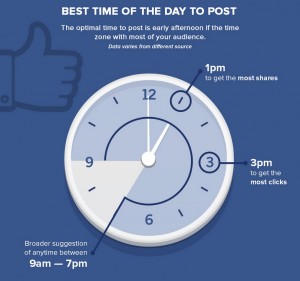Infographics are one of the top forms of visual content used by businesses, and with good reason. People process visual information faster than textual information, and 65% of the population are visual learners. Many companies have incorporated infographics into their circulation of visual content. There’s no doubt that the common belief is that infographics rule!
But do infographics always offer value to readers?
Including new and interesting information in your infographic is important, but it will only get you so far. What will invariably matter the most is an attractive and easy to read design. If your infographic is poorly designed, it will only end up being a waste of time and resources to create. No one will want to repost your infographic, share it, or link back to it resulting in little to no potential for receiving backlinks from your newly created visual content.
Good infographics offer value to readers by providing information in an visual, easily digestible way. They are easy to share across multiple platforms. Even if you’re not a designer, it’s possible to make good infographics–as long as you know some very basic principles of design.
Here are 5 bad infographic design habits you should avoid at all costs.
1) Ugly or hard to read color schemes.
A bad color scheme can ruin a reader’s experience of an infographic. The purpose of an infographic is to present information to the reader in a visual, illustrative way. That’s why it’s essential that people are able to read the text and visuals easily.
It’s a good idea to have a color wheel on hand when you’re deciding what colors to use. Complementary colors make good color schemes. Avoid using colors that are beside each other on the color wheel, as they will be too similar and hard to distinguish. For example, if you’re using a blue background, make your primary text orange.

As a rule of thumb, don’t use dark text on a dark background, light text on a light background. Do use dark text on a light background or light text on a dark background.
2) Confusing and cluttered design.
To get people to even read your the infographic you make in the first place, it needs to have an attractive design. Think about it: would you want to spend longer than 30 seconds trying to decipher information from an ugly, hard to read infographic? Or would you rather look at a beautifully designed image with clear text and helpful visuals?
One of the most commonly made design mistakes in infographics is clustering. For readers to be able to read and digest information, there needs to be negative space between text and images. If you find that you are having trouble fitting your information into the space you have, consider using a different template or cutting out unnecessary information.

Respect the negative space.
Another common design flaw is chartjunk. Chartjunk is the use of unnecessary extra visual elements in charts that detract from their clarity. For example, you don’t want to decorate a graph with a bunch of icons–this will distract the eye from the data points. Remember to respect the negative space on the chart.
3) Inconsistent style.
It’s easy to get carried away using different fonts, colors and icons styles. Don’t. Inconsistent style will make your infographic look cluttered. If your infographic is geared towards a business audience, it’s especially important to be consistent as inconsistency will look unprofessional.
When it comes to fonts, choose either one or a maximum of three different fonts (one title, one subtitle, one body text). More important, be consistent. Whatever font you choose for titles, use only that one.
The same goes for icon and image styles. Choose either thin-lined icons or thick-lined, but not both. The icons should also be sized the same way.
![]()
Uniform style.
Use images with a similar composition and color palette. Images on neutral white backgrounds shouldn’t be mixed with images with busy backgrounds. If you choose to crop or frame your images, use a uniform style of border–all circular or all square.
4) Inappropriate chart and graph choice.
If you are including data in your infographic, you will need to decide what kinds of charts and graphs you will use before you begin creating. Using a chart or graph that doesn’t suit the kind of data you’re presenting, it will only confuse readers.
For example, if you’re showing data that is a share of a total, it makes more sense to use a pie chart than a line graph. If your data has been aggregated into groups, a bar graph would be a better visual than a pictogram.
A good exercise is to show your infographic to someone else and see if they are able to understand the data.
5) No source for your information.
This one has more to do with ethics than design. For your information to be credible, you need to indicate where it came from. This can be done easily by simply placing the link to your source in small font at the foot of your infographic. You can also embed links into your infographic to make it interactive, and point directly back to the source.
Don’t let these points intimidate you. These principles are largely intuitive when you’re designing an infographic. It’s unlikely that you will create an infographic with all of these flaws. But by keeping these basic points in mind, you will be able to stop yourself from making these common infographic design mistakes.
Digital & Social Articles on Business 2 Community(173)








